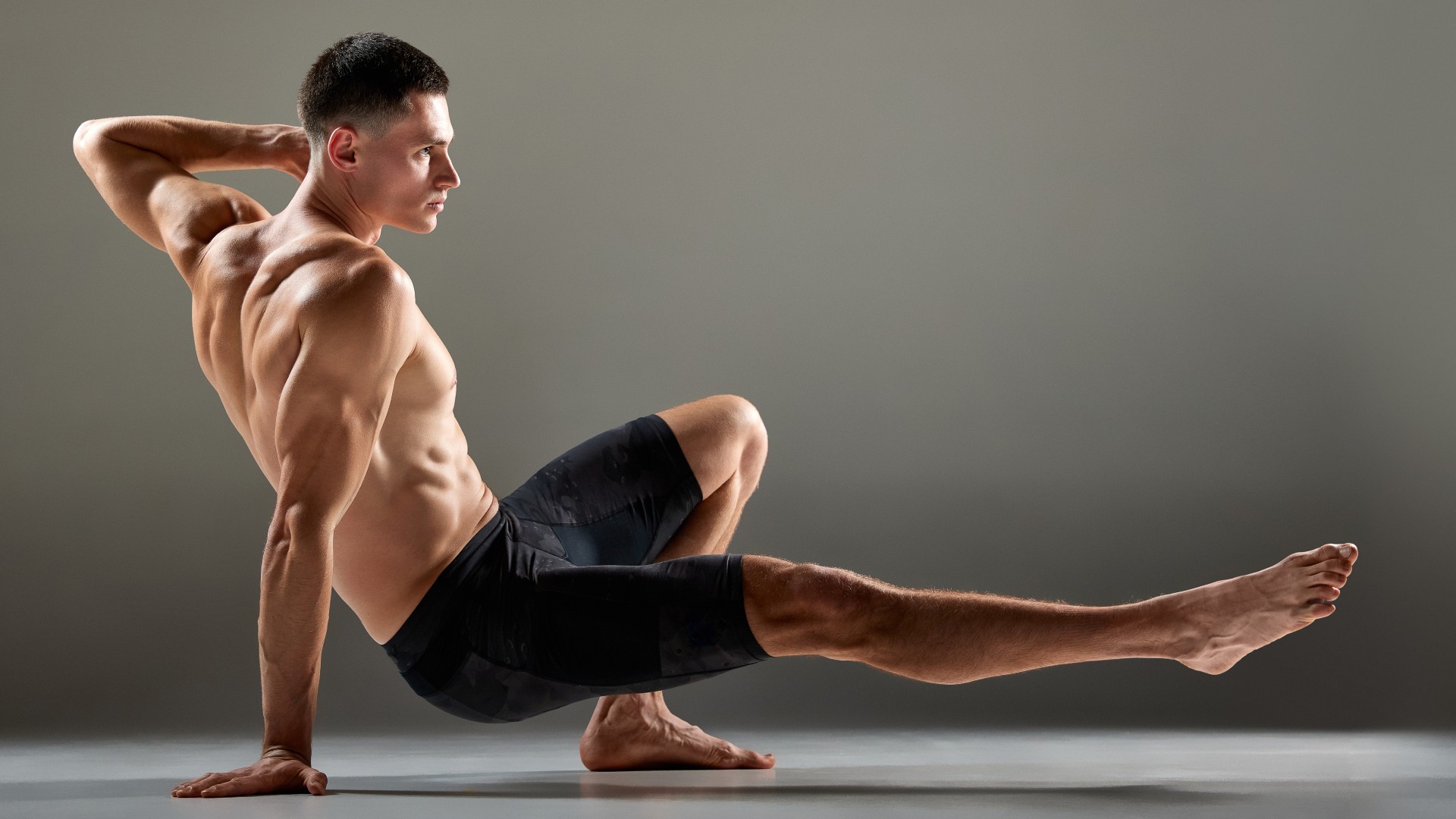
Like the best calisthenics workouts, animal flow combines bodyweight movements performed on the floor, but as the name suggests, in sequence or flow rather than sets and reps. Think strength training meets yoga. And it nicely bridges the gap between those who enjoy lifting weights and others who prefer restorative exercises.
If you haven’t heard of animal flow before, the bodyweight training style totally schooled me on what it means to exercise without weights, using just your body and the ground beneath you.
I wanted to find out what a week of animal flow could do for my body and whether or not it could reignite my love for bodyweight exercise. So, I blocked out 30 minutes a day for one week. Here are my results.
What is animal flow?
According to Animal Flow, the floor-based style of bodyweight training uses animal poses, crawling, transitions and a continuous flow of movement to create “sequences of motion.” The goal is to work on and improve several areas of fitness.
You can group animal flow into the “Six Components” that make up the AF system and can be “mixed and matched” to form your workout. These are:
- Wrist mobilizations: prepare the wrists for exercise
- Activations: wake up the muscles and bring conscious awareness to the body ready for movement
- Form-specific stretches (FSS): encourage flexibility, mobility and “strength through motion”
- Traveling forms: animal locomotive movements that mimic animals and their variations
- Switches and transitions: dynamic movements that can link together to form combinations of exercises
- Flows: exercises linked together to form a sequence or workout.
Within each component, you’ll find various moves, stretches or activation exercises designed to give you a solid grounding in animal flow. Once the basics and foundations are laid down, you can build and adapt using the animal flow library and various transitions.
I tried a 30-minute animal flow exercise routine every day for a week — here’s my verdict
Here’s how my seven-day experiment went.
Get instant access to breaking news, the hottest reviews, great deals and helpful tips.
I started slow
Saying you want to try animal flow is like saying you want to start weightlifting. You don’t just pick up a heavy weight and pump out bicep curls or deadlifts. You begin at the beginning and build from the ground up.
Animal flow is like an art form, so rather than jumping aimlessly into an advanced YouTube class, I focused my attention on the basics, adopting a 30-minute animal flow beginner class, which I stuck to throughout the seven days. My only goal was to study any progression between my first and last session and how it made me feel.
You can check out the video below to try it for yourself.
We worked through the standard wrist mobilizations — I get dodgy wrists during workouts, so this was music to my ears — followed by introductory movements found in drills, then moving into a beginner flow.
I learned loads
I’ve seen animal flow but never taken the time to understand it. It’s the definition of functional training, improving the quality and range of your movement and how you interact with your body throughout the day.
But I didn’t realize how much structure and progression it involves. Animal flow aims to consciously connect the body, breath and mind (no easy feat) to improve balance, coordination, mobility, flexibility, range of motion and proprioception and build strength, power, stability and endurance.
A study by Animal Flow and Dr. Jeffrey Buxton found that quadrupedal movement training (QMT) shows improved functional movement, range of motion, stabilization and flexibility markers when regularly performing an animal flow routine. Who knew? Not me.
I found it insanely tiring
I wasn’t expecting to find animal flow so challenging. It takes a lot of energy to control your body through a range of motion you’re not used to — especially when every movement requires complete control.
My initial class introduced four level one movements — the loaded beast, front step through, underswitch and jumping side kick through — but the entire program includes around 75 movements ranging from beginner to advanced. Meaning there’s no end to what you can do.
I got wiped out after the first day, and although this improved throughout the week, I still found the routine challenging by day seven.
I felt amazing
By day seven, I felt incredible. I noticed better mobility, flexibility and less stiffness in the mornings, which translated to better movement quality during my CrossFit workouts. My hips and hamstrings were more open, my core felt strong and I even noticed slightly better posture.
Granted, a week won’t change your life, but I couldn’t believe how much more in tune I felt with my body after just seven days of practice.
I found it super fun and meditative
I’ve always loved teaching mobility classes, and I encourage (nag) my clients to include them weekly in their programs. Increasing mobility and flexibility helps safeguard your body from injury and improve posture and form during exercise.
I couldn’t believe how much fun I had learning this routine and how quickly the 30-minute class flew by. I also felt calmer. Curious, I did some digging. Various studies show that the gentle nature of repetitive movement can bring you to mindfulness.
And rhythmic motions, like animal flow, can be therapeutic on the nervous system, helping to physically and mentally ground you. One study even found improvements in cognitive function and working memory following meditative movement.
I’ve already committed to adding one animal flow routine to my exercise program each week, and I’m keen to learn and develop as many moves as possible. Besides, you can do it anywhere, anytime, without equipment — you’ll just need some patience!
More from Tom's Guide
- Forget sit-ups, this 3-move ab workout chisels concrete core muscles in just15 minutes
- Apple Watch Ultra 2 vs. Garmin Epix 2 — which is best?
- I did the standing dead bug ab exercise every day for a week, here are my results.

Sam Hopes is a level 3 qualified trainer, a level 2 Reiki practitioner and fitness editor at Tom's Guide. She is also currently undertaking her Yoga For Athletes training course.
Sam has written for various fitness brands and websites over the years and has experience across brands at Future, such as Live Science, Fit&Well, Coach, and T3.
Having coached at fitness studios like F45 and Virgin Active and personal trained, Sam now primarily teaches outdoor bootcamps, bodyweight, calisthenics and kettlebells.
She also coaches mobility and flexibility classes several times a week and believes that true strength comes from a holistic approach to training your body.
Sam has completed two mixed doubles Hyrox competitions in London and the Netherlands and finished her first doubles attempt in 1:11.

